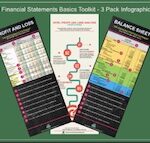Hotel KPIs and The Asset Manager Focus
Have you considered hotel KPIs using an asset manager lens?
Are you looking at potential more than performance most of the time?
Is your focus on the forest more than just the trees?
I will lay out a strong case why often potential eclipses performance.
More importantly, your hotel owners are more focused on potential than performance.
This Part 2 of a 3 Part blog post series will cover:
This is Part 2 of the 3 Part Series of blog posts on hotel KPIs.
Grab this EXCEL Spreadsheet
Don’t miss our 5 Killer Hotel KPIs Dashboard
Get this exclusive Excel Template that you can customize to create your own 5 Killer Hotel KPIs Dashboard
If you missed Part 1, Click below to read that first and then come back.
Remember what we said in Part 1?
Let me reproduce the gist of that post.
We said “often something else eclipses performance”.
“More importantly, your hotel owners are more focused on that something else rather performance”.
So, what is that something else?
It is that potential that I talked about in the opening paragraph of this post.
The Asset Manager's Potential Imperative
So, what do we mean by potential?
Potential in simple terms can be called the highest level of achievement that is possible.
Potential in business can often be called capacity.
For example, in the case of the hotel KPIs, room revenue is a big chunk of hotel revenue.
That room revenue is based on capacity called Rooms Available.
Or in other words, the highest possible guest rooms that can be sold in a day.
That is capacity or potential.
Why is it such a big deal?
In Part 1 of this blog post series, we focused on performance.
Performance based on business volume and price.
So, performance told you how much of room revenue you achieved based on business volume and price.
Or in other words, based on occupancy and average daily rate.
This you saw was the Operator focus on hotel KPIs.
Operators look at the result of the hotel operation - revenue.
So, what is the Asset Manager Focus on hotel KPIs?
Unlike a Hotel Operator, a Hotel Asset Manager looks at the asset producing the revenue.
So, in the case of the Rooms department, a hotel asset manager is looking at the capacity.
Or in other words, Rooms Available as the asset that produces room revenue.
Why do they do that and what is so great about that?
Awesome questions, I am getting to that now.
Suppose you wanted to know whether your room revenue achievement is good, bad or indifferent?
How would you do that?
Performance will only tell you what is achieved.
Not what is the potential for achievement.
Now let us bring in capacity.
Or the Hotel Asset Manager approach.
Join our Facebook Group of like minded, successful hoteliers.

Profit Savvy Hoteliers League
Capacity tells you the Potential that is Achievable
So, the focus of potential is about the highest level of achievement possible.
Capacity delivers that information rather than business volume.
And that is what Hotel Asset Managers are focused on.
Let us take an example.
EXAMPLE
Earlier we were looking at business volume (occupancy) and price (average daily rate).
Let us look at both of these from another angle.
The Capacity angle.
Remember that for Rooms department of a hotel, Capacity is Rooms Available.
So, we will use the Rooms Available capacity measure to come up with probably the most powerful Hotel KPI there is.
RevPAR or Revenue Per Available Room.
RevPAR Calculation
RevPAR = Average Daily Rate x Occupancy %
So, what is the big deal with that?
I am getting to that right now.
This is a seemingly simple calculation but it has tremendous hidden power.
By combining the business volume element (occupancy) with a price element (average daily rate) and using capacity (rooms available), RevPAR uses a composite metric which is strategic.
See how RevPAR uses both ADR and Occupancy % to achieve the best combination.
RevPAR is different though.
And it is a superior measure to average daily rate.
How you ask?
Let me explain.
As we saw earlier, Average Daily Rate only takes into account the price factor (just like occupancy only taking into account the business volume factor).
These deal with single dimensions.
This is why you would choose RevPAR over ADR.
You need both.
Just one of them is good but not good enough.
If you were tasked with achieving a revenue target, you will need both quantity and price.
What use is that you may ask?
RevPAR as a strategic Hotel KPI has the capability to tell you how much of the revenue earned:
- Is due to business volume and
- How much is due to price.
That is why I said RevPAR is considered the Top Key Performance Indicator (KPI) in a hotel.
This is a strategic index having a powerful impact on your profit.
In a way, RevPAR gives you an idea of the potential revenue that could have been earned.
RevPAR shows you how much you earned for:
- Every Room that is Available to Sell and not just
- How many rooms were actually sold
So, revenue really does not tell us anything about what COULD HAVE BEEN EARNED!
Average occupancy can be 40% or 90% in a month depending on seasonality.
In other words, revenue is what is earned at the current business volume or occupancy.
Asset Manager and RevPAR
Occupancy, ADR & Rooms Available

What else are some more powerful features of Revenue Per Available Room or RevPAR as it is cryptically known?
It is the capacity or the highest revenue earning level of the asset.
See how in the Room Revenue Contribution image above, capacity plays a big part.
Rooms Available is the primary asset for the Rooms department revenue.
So, the first step is to know the Capacity of an asset before it is utilized.
An asset is only as good as the use it is put to.
But the real power of RevPAR is in identifying smaller, specific niches.
Remember the categories we briefly looked at earlier like individual, group, business and leisure and so on.
Market segmentation is the segregation of revenue into distinct target markets.
By doing this, it arms you with a powerful tool you can use in your market segmentation.
RevPAR allows you to see the effect of occupancy and average daily rate separately on revenue.
How?
This, without exaggerating, I might say is the Holy Grail of revenue and profit maximization strategies!
Well, first, you now know the impact on revenue of business volume and price SEPARATELY!
How does that happen you ask?
It may mean the difference between the highest revenue and profit you have ever achieved and just making do with revenue increase and that too not all the time.
Asset Manager is Balance Sheet / Cash Flow Oriented
If the Hotel Operator focus is performance, they are dealing with the Hotel Profit and Loss Statement.
If the Hotel Asset Manager focus is potential, or capacity or asset, they are dealing with the Hotel Balance Sheet and Cash Flow Statement.
So, as you can see, focus has shifted from revenue (Hotel Profit and Loss Statement) to asset (Hotel Balance Sheet).
Along with this, focus has also moved from business results to potential business results.
Potential is superior simply because it is showing you how much more capacity or asset can be utilized.
In a way it is telling you how much more your performance is capable of increasing.
That is powerful.
Now let us step back and take a big picture overview of what we saying here.
Asset Management is the Name of the Game
So, a Hotel Asset Manager focus is all about how an asset capacity can be leveraged for higher and better revenue performance.
It is one thing to be serving you fish for your meal.
It is quite another to show you how you can fish.
So that your future meals and livelihood can be sustained.
Just think about this.
Begin looking at your hotel business from the perspective of every asset used in it.
Go behind the scenes and discover the potential of each asset.
- What is the capacity of your rooms available?
- What is the capacity of your restaurant seats?
- What is the capacity of your spa treatment rooms?
Now, you can begin to measure the potential of your business assets to deliver revenue and eventually profit.
Hotel Asset Management is all about this potential game.
Your hotel owners are actually more focused on this potential mainly because they are looking for growth.
Sustainable growth.
So, they tend to favor the Hotel Asset Manager approach.
In the 3rd and Final Part of this 3 Part blog post series, we will see how the Hotel Asset Manager approach actually works.
You Can Take the steps shown below right now to embrace the hotel asset manager approach in your operation.
Steps You Can Take Right Now
STEP 1
Begin looking at your hotel business from the perspective of every asset used in it.
STEP 2
Go behind the scenes and discover the potential of each asset.
STEP 3
What is the capacity of your Rooms Available?
STEP 4
What is the capacity of your Restaurant Seats?
STEP 5
Ask yourself how this potential can be leveraged to produce better revenue and profit
Related Posts
Sign Up for More Tips, Strategies and Secrets
Sign up to the Peak Profit Newsletter for more tips, strategies and secrets to hotel performance analysis which will allow you to take successful decisions and exceed your targets consistently..
14




